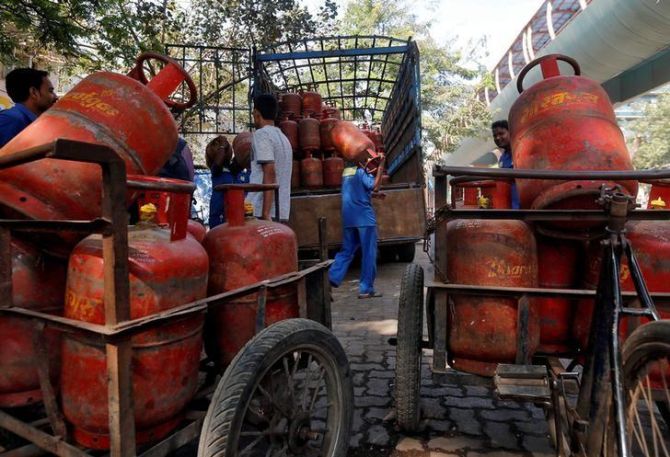Of the 170 million rural households in the country, a government website claims to have connected 82 per cent of them. The metered households are 50 per cent of the total.
As on February, 2018, of the 780,000 villages to be intensively electrified or provide connection to all in households, 493,000 have been covered.
However, the amount and quality of the power supply cannot be ascertained from this data. No clause in any of the rural electrification programmes promises 24 hours’ power supply.

On the back of LPG connections and promise of electrifying every village household, the Narendra Modi-led BJP government is trying to make inroads into states which are going to the polls.
But these states are a real challenge when it comes to the success of these flagship energy schemes.
Last month Prime Minister Narendra Modi announced that his government has achieved 100 per cent electrification of all villages in India.
The work of bringing electricity to some 18,000 villages that were yet to have access to power had begun in 2015. The target was to get them electrified within 1,000 days.
And Modi and his ministers patted themselves on the back for having completed the task ahead of the deadline.
What however is left to be achieved is 100 per cent electrification in all rural households and metering them for reliable and steady electricity supply.
Of the 170 million rural households in the country, a government website claims to have connected 82 per cent of them.
The metered households are 50 per cent of the total.
As on February, 2018, of the 780,000 villages to be intensively electrified or provide connection to all in households, 493,000 have been covered.
However, the amount and quality of the power supply cannot be ascertained from this data.
No clause in any of the rural electrification programmes promises 24 hours’ power supply.
While 100 per cent rural electrification in the true sense of the term is still some distance away, urban power reforms have been hamstrung by lack of funds and slow execution.
For instance, though the Centre sanctioned Rs 27,146 crore for the Integrated Power Development Scheme projects across the country, only Rs 5,128 crore has been approved so far.
Last year the Union government announced a new scheme called Sahaj Bijli Har Ghar Yojna (Saubhagya) to speed up electrification.
The total outlay of the Saubhagya project is Rs 16,320 crore while the gross budgetary support is Rs 12,320 crore.
The plan is to provide the funds to the states for them to subsidise electricity connections to rural and urban households.
In other words, the government is looking to the states to provide electricity to every household connected to the national electricity grid.
The speed of reforms and the quality of power supplied will now depend on the state and its functionaries.
The ambitious scheme to turn around the sick state-owned power distribution companies is behind target as the average aggregate technical and commercial loss stands at 21.35 per cent.
For large states such as UP it is 30.94 per cent, Bihar 36.75 per cent, Rajasthan 24 per cent, Punjab 29 per cent, etc.
But expectations are high since the BJP, which is also the ruling party at the Centre, is now heading the government in 21 states.
The Pradhan Mantri Ujwala Yojana is one such scheme which many believe was instrumental in the BJP getting a thumping majority in the recent state elections.
“Both the Saubhagya and the PMUY schemes have worked well for the government politically. However, there is scope for improvement in the power sector.
"More investment is required in distribution to make electrification truly 100 per cent.
"Similarly, rather than thinking about a phase-out, the current subsidy on LPG should be extended to a few more years to get more families to start using clean fuel," says ICRA’s senior vice-president K Ravichandran.

PMUY aims to provide LPG cooking gas connection to 5 crore below poverty line families by 2019.
"After achieving 3 crore connections in record time, the reach of the scheme was extended to 8 crore,” says a government source, adding that impressed by the model, countries like Nepal and Bhutan have shown interest.
Thanks to PMUY, LPG consumption has seen an annual increase of 10 per cent in the last two years.
Moreover, with the aggressive growth of the scheme, the capacity utilisation of bottling plants too rose to as high as 120 per cent some days during the period.
Each family brought into the PMUY fold gets a one-time budgetary support of Rs 1,600.
However,the refilling rate among PMUY consumers is comparatively low -- 3.8 cylinders per year versus 7.76 in the case of a non-PMUY consumer.
The increase in demand on LPG has even led the government allowing night shifts at bottling plants, keeping safety at stake.
While the consumption has increased manifold with increasing number of families being given LPG connection, awareness among the targeted consumers is still a cause of concern, despite measures like LPG Panchayat.











